
Critical Mass (2021-22)
Jasper de Beijer: “Critical Mass” at Museum Rijswijk
Installation and Retrospective
January 29 – April 18, 2022
“Critical Mass”, Installation and Retrospective, at Museum Rijswijk
January 29 – April 18, 2022
“Over the past 20 years I have scoured through countless layers of information and built diverse worlds – each coming to fruition through its own working process, palette and logic. Now that these worlds have reappeared, I see that they fit together much better than I would have thought. When we are in the middle of the hole, we are standing in the Netherlands, geographically speaking, and we are seeing the planet from this perspective. My tableaux are lifeless, they are only an echo of the verve, intelligence and madness they portray. They have been brought back to life from their shadows in order to interact with a new reality.
Just beyond the rim of the hole is actual reality, a life that we are unable to see. From deep in the hole we can only construct in our mind’s eye what is happening above and beyond. Or perhaps, whatever is happening above is just as relative as what’s happening in the dark below.” — Jasper de Beijer
***
Winner of the Agnes van den Brandeler Museum Prize:
In 2019 the Agnes van den Brandeler Foundation invited several medium-sized museums in the Netherlands to submit proposals for exhibitions and accompanying publications that would highlight the work of a highly talented Dutch artist who has not had enough exposure in Dutch museums over the past years. The foundation chose the proposal by Museum Rijswijk for a retrospective exhibition of Jasper de Beijer’s work and the comprehensive publication on his oeuvre.
Jasper de Beijer:
The world that Jasper de Beijer (Amsterdam, 1973) presents to us through his photographic works are fascinating, familiar and disconcerting all at the same time. His work is about the process of looking, seeing and interpreting. At first you think it’s a photograph of reality, but then you see it’s a photograph of a paper model. You are swept into a narrative that is more than a photograph. You need to respond in some way, but how? This is precisely the question the artist is asking us: Do you really know what you are seeing?
The subject matter in the photographs are painful histories we cannot not escape. Our colonial past, the Industrial Revolution, the First and Second World Wars – all have been examined from many angles and hold many versions of the truth, whether real or projected. What exactly is the truth? Can there be only one or can many truths coexist? Through his chosen process, De Beijer creates space for viewers to reflect via the medium of photography on the sensitive subjects he addresses.
Installation: Critical Mass:
The installation Critical Mass, a site-specific work made especially for Museum Rijswijk, is a giant hole in the ground for us to descend into and wander through. It is a dark space and by using black light, all that remains visible is that which De Beijer wants us to see. The white of the paper is the only thing that lights up; the darkness is simply the absence of information. The artist has recreated some of the scenes he has made over the past 20 years. For some of these, he found the original concept drawings again, for most others he rebuilt them on the basis of the photographs he once took. By digging up these tableaux from the past, he was able to take an objective view of them and re-examine his chosen subjects and methods.
Photo series 2004 – 2021:
In the exhibition there are 27 photo works from the series Buitenpost, The Devil Drives, Cahutchu, Le Sacre du Printemps, The Riveted Kingdom, Undongo, Marabunta, Wir Sind das Gedächtnis, Brazilian Suitcase and The Admiral’s Headache. The series were made between 2004 and 2021 and give a generous overview of his oeuvre up to this point.
Comprehensive publication:
Accompanying the exhibition is a book published by Jap Sam Books. It covers the current installation and uses this as a springboard to present an overview of the artist’s productive oeuvre up to now.
Price: €29.50 (with MuseumCard discount: €25.00).
For more information and press photos, please contact Diana Wind, curator of contemporary art, mobile 0630388366 or dianawind@museumrijswijk.nl.
Herenstraat 67 | NL-2282 BR Rijswijk
info@museumrijswijk.nl | museumrijswijk.nl
+31 (0)70 390 36 17
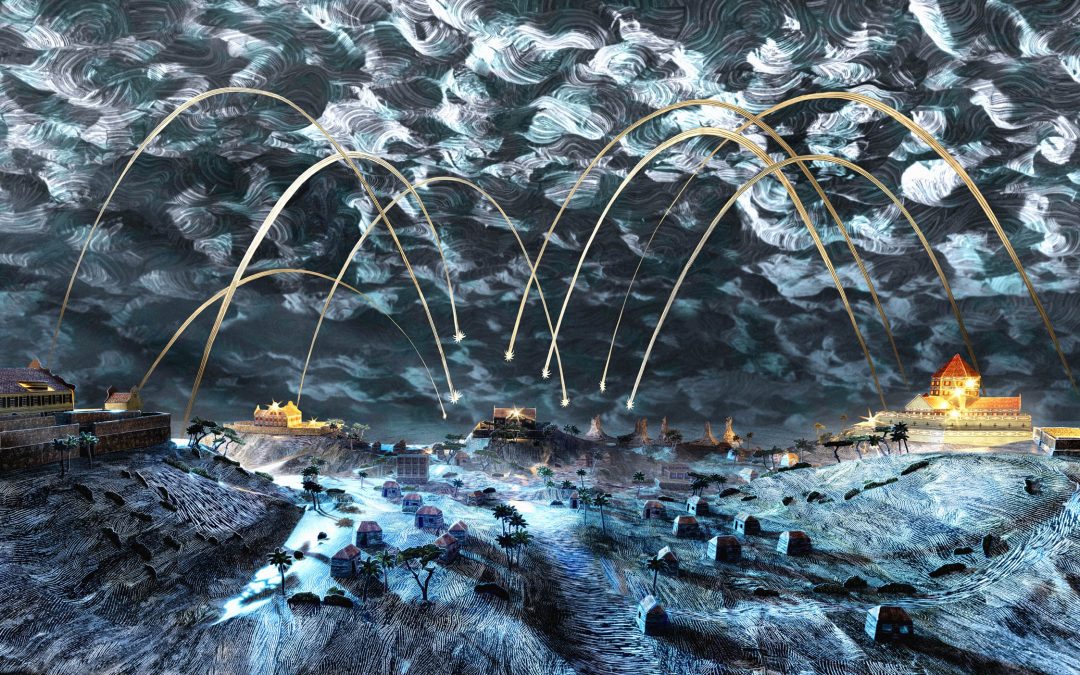
The Admiral’s Headache (2018-20)
The Admiral’s Headache expands on the artist’s familiar themes of Dutch colonialism and the way that the media romanticizes, simplifies and conflates history and cultural attitudes. De Beijer chooses subjects for their strong visual mythology, and past series have included mythical encounters between natives and explorers in the jungles of Brazil, the Dutch East Indies, and contemporary Africa. In each series, the artist becomes steeped in research and image collection both on the ground and at home. De Beijer then combines digital sketching, drawing, 3D modeling, and sculpture to create stand-alone photographs. Every object in this series is first designed in a game-modeling software, then printed as a flat 2D blueprint, cut out and folded, and finally reconfigured as 3D paper miniatures on a scale-model landscape. The photographs in this series reference 18th-century hand-colored engravings, and from a distance could be colonial illustrations. But upon closer viewing, the meticulous hand-drawn lines are imbued with an eerie sci-fi quality. The tell-tale clues of the cut paper reveal themselves: creases and folds in costumes, or some remains of glue visible in the clouds.
The title “The Admiral’s Headache” refers to the story of Albert Kikkert, the former admiral and Governor of Curaçao in the early 1800’s. Kikkert complained that the white facades of the buildings shining in the sun exacerbated his migraines, and ordered that they all be painted the bright shades typical of Curaçao’s waterfront today. During de Beijer’s residency in this former Dutch colony, the artist collected research, focusing primarily on the methodical approach to slavery and capital extraction. De Beijer depicts a desolate, surreal and industrial realm – an island riddled with fantastic machines waiting to be involuntarily powered by extracted human labor. Intrigued by the unique modular, hermetic character of its buildings, ships, tools, and weapons, de Beijer recreated a world where the colonists are hidden players, present but unseen behind imposing mansions. The artist describes the Dutch as being kept comfortable and safe inside the walls, “like an impenetrable cultural cocoon”. The hard shell of the fortress protected the famed Dutch gezelligheid – a coziness, warmth, and conviviality – and kept out anything unseemly or dangerous, much like the reality of slavery’s exploitation could be ignored while living within the Dutch simulacra.
The stripped-out colonialist lurks around Curaçao with a ghost-like omnipresence, appearing in traces of puffs, gunpowder shots, or magical smoke emanating from fired cannons. But the enslaved people who powered every aspect of this island are left entirely unseen, haunting our collective imagination. De Beijer’s intention is not so much to give a moral judgment on colonialism, but to transform its particularly Dutch aspects into oneiric tableaux.

The Exhibition (2018)
The Admiral’s Headache expands on the artist’s familiar themes of Dutch colonialism and the way that the media romanticizes, simplifies and conflates history and cultural attitudes. De Beijer chooses subjects for their strong visual mythology, and past series have included mythical encounters between natives and explorers in the jungles of Brazil, the Dutch East Indies, and contemporary Africa. In each series, the artist becomes steeped in research and image collection both on the ground and at home. De Beijer then combines digital sketching, drawing, 3D modeling, and sculpture to create stand-alone photographs. Every object in this series is first designed in a game-modeling software, then printed as a flat 2D blueprint, cut out and folded, and finally reconfigured as 3D paper miniatures on a scale-model landscape. The photographs in this series reference 18th-century hand-colored engravings, and from a distance could be colonial illustrations. But upon closer viewing, the meticulous hand-drawn lines are imbued with an eerie sci-fi quality. The tell-tale clues of the cut paper reveal themselves: creases and folds in costumes, or some remains of glue visible in the clouds.
The title “The Admiral’s Headache” refers to the story of Albert Kikkert, the former admiral and Governor of Curaçao in the early 1800’s. Kikkert complained that the white facades of the buildings shining in the sun exacerbated his migraines, and ordered that they all be painted the bright shades typical of Curaçao’s waterfront today. During de Beijer’s residency in this former Dutch colony, the artist collected research, focusing primarily on the methodical approach to slavery and capital extraction. De Beijer depicts a desolate, surreal and industrial realm – an island riddled with fantastic machines waiting to be involuntarily powered by extracted human labor. Intrigued by the unique modular, hermetic character of its buildings, ships, tools, and weapons, de Beijer recreated a world where the colonists are hidden players, present but unseen behind imposing mansions. The artist describes the Dutch as being kept comfortable and safe inside the walls, “like an impenetrable cultural cocoon”. The hard shell of the fortress protected the famed Dutch gezelligheid – a coziness, warmth, and conviviality – and kept out anything unseemly or dangerous, much like the reality of slavery’s exploitation could be ignored while living within the Dutch simulacra.
The stripped-out colonialist lurks around Curaçao with a ghost-like omnipresence, appearing in traces of puffs, gunpowder shots, or magical smoke emanating from fired cannons. But the enslaved people who powered every aspect of this island are left entirely unseen, haunting our collective imagination. De Beijer’s intention is not so much to give a moral judgment on colonialism, but to transform its particularly Dutch aspects into oneiric tableaux.
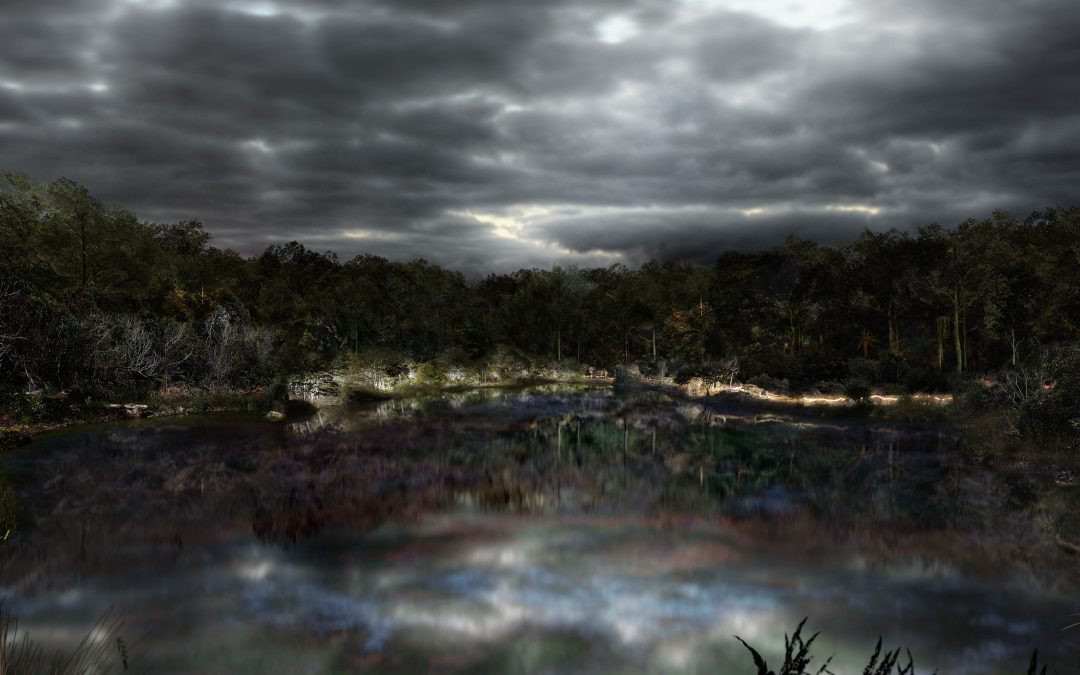
The Brazilian Suitcase (2016-17)
The Brazilian Suitcase is an imaginary travel report of three different expeditions (1926, 1979 and 2016) to the heart of the Amazon forest, in search of a lost civilization at the lake of El Dorado. The narrative of the expeditions is based on numerous real accounts of explorers, anthropologists and documentary makers, where De Beijer uses a combination of footage shot by himself in the rainforest, objects built in his studio, computer generated images and archive material.
In the timespan of 90 years we witness 3 different moments where an encounter takes place between the expedition members and the local tribe at their destination. Both groups project their fears and desires onto the other group, feeding the myth that they have carefully constructed about each other. In their endless search for the mystery of a lost civilization, the expedition members have left their own blueprint of traces in the forest; every object, story, ritual or habit that they imported from the western world becomes assimilated in the tribe’s mythology – the cultural mutation that takes shape becomes a distorted echo of our own culture.
Two different strains of thought move alongside each other; the tribe’s desire to see the jungle through a birds eye view triggers their fascination for airplanes, giving the expedition members mythical powers. On the other hand, the mystical relation between the tribe and the lost civilization of their ancestors makes the expedition members dig deeper for the traces of this lost culture and it’s riches. The endless repetition of this continuous mechanism creates a situation where it is impossible to escape one’s point of view. Perception itself and the need to look beyond it creates a blind spot for all people involved. Although the elements, situations and actors may vary, the destiny of all involved is inevitable from the beginning.

Mr. Knight’s World Band Receiver (2014)
In 1986, 18-year-old Christopher Knight trekked into the Maine woods. After pitching an improvised camp, he remained there in virtual isolation for the next 27 years. For decades, the ‘North Pond Hermit’ avoided all contact with other people. He didn’t even make campfires, for fear of being discovered. Knight kept track of what was going on in the outside world by listening to news radio and rock stations on a battery-operated radio. He was ultimately apprehended by the police for burglarizing vacation cabins and a nearby holiday camp.
Artist Jasper de Beijer (1973) was intrigued by Knight’s story. He pictured the hermit, sitting in his darkened tent, listening in silence to the news. With a radio as his sole source of information, Knight was more or less untouched by the visual deluge of the past three decades. His mental picture of recent events must have been entirely different to the images that are so familiar to us. In our society, news stories have spawned a mass of collective, ‘iconic’ images. In Knight’s lonely forest clearing, these same events materialized in a self-contained universe. In his mind’s eye, the general, abstract reports on the radio were converted into specific visual details: a kind of ‘reverse empiricism’.
For his new series ‘Mr. Knight’s World Band Receiver’, Jasper de Beijer chose to work from a similarly detached perception. The artist decided to keep clear of all photos and other visual input, consciously limiting himself to the bare reports. The images that have come out of this approach – created in response to more or less iconic events in recent history – are uniquely subjective. They have wrenched themselves free of historical reality: in the one work, a minor detail takes center stage; in the other, a familiar event has acquired a new emotional charge.
While the images appear to refer to the world we live in, this relationship is actually quite tenuous. They could just as easily be relating an entirely different story; the blueprints of an alternate reality. Like the stream of consciousness that constantly unfurls in our mind, they are the artefacts of an inner world that at times seems almost random – or that at any rate is entirely personal, in every aspect.
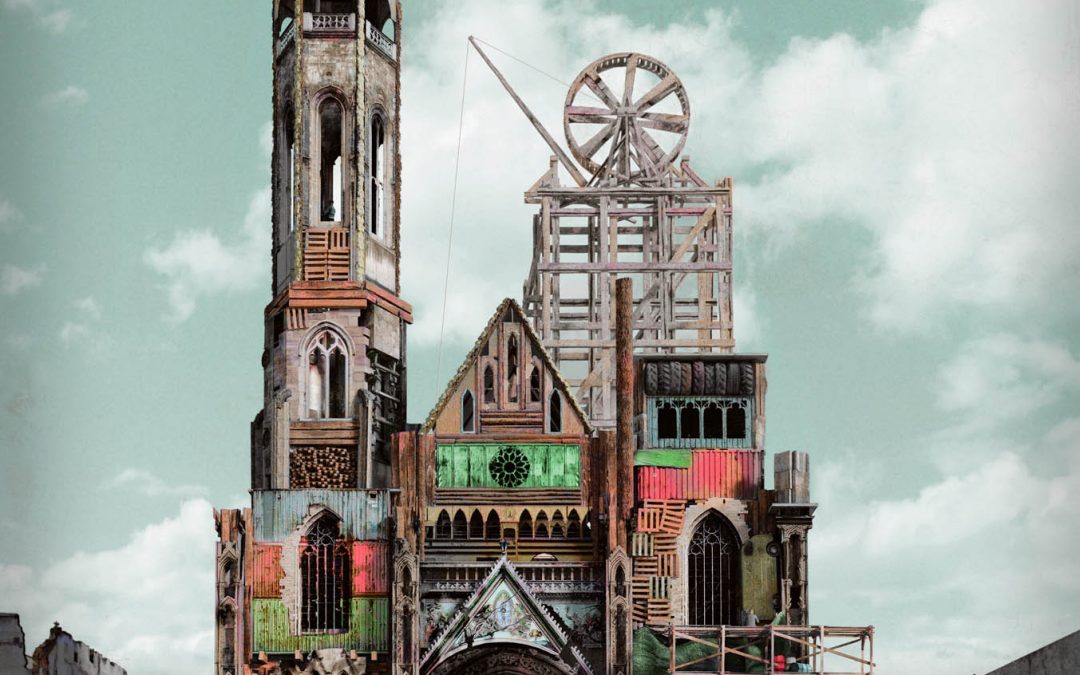
Wir sind das Gedächtnis (2013)
The dream that was Germany in 1871 is over. The passion and concerted effort that had brought unity to the nation were torn apart by a frustrated Kaiser and a sociopathic dictator. The cities of the former kingdom of Prussia, the cultural heart of the nation, were razed to the ground. Today, after decades of nursing their wounds and repairing the destruction, these centres have recovered some of their former glory.
The artist recently made a study tour past some of the locations that played such a dramatic role in Europe’s recent history. Viewing the reconstructed cityscapes, he wondered how often you can demolish and rebuild a structure before it loses its identity. He imagined a town that has been destroyed for the umpteenth time, and a community that tries to erect a silhouette of its culture from a vague recollection of its past. Using only the primitive means left at their disposal, the townspeople strive to recover their identity, rebuilding their city with the same determination that they shared in former times – an echo of an idealised past.
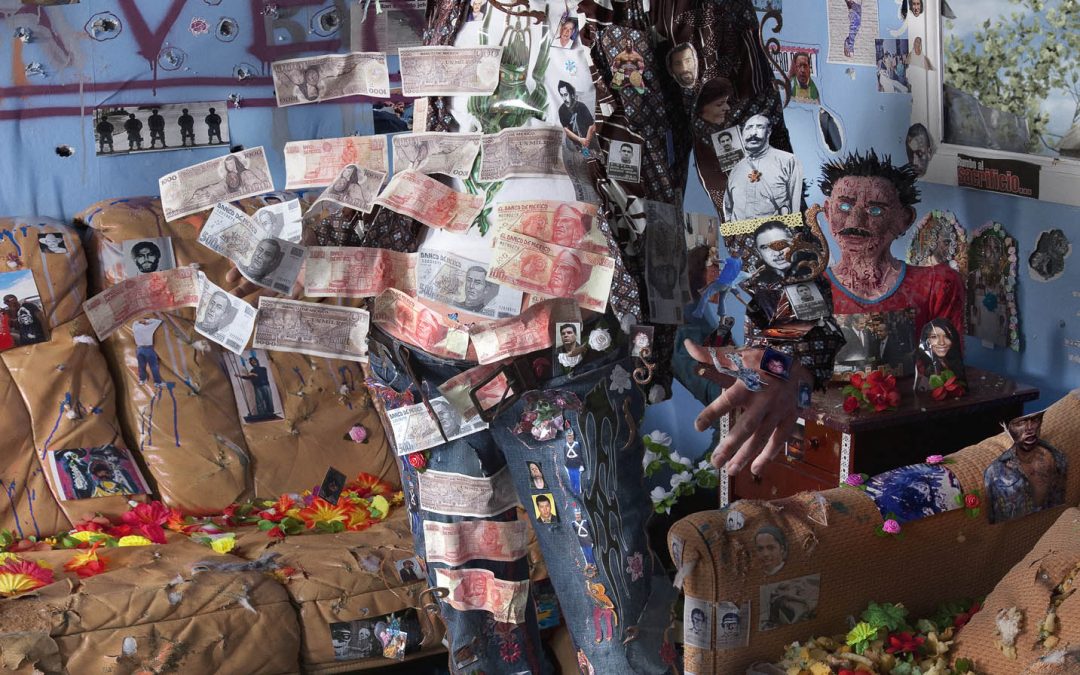
Marabunta (2012)
Marabunta deals with the mythology that exists around the Mexican drug cartel wars. Cartel leaders have an almost mythological status due to the fact that they are most wanted on the one hand and lead an incredibly rich and flamboyant lifestyle on the other. In the neighborhoods where they grew up they are legendary heroes, but in the general public also concerned as the most cruel and evil criminals that ever existed. When I visited Mexico I occurred to me that the Mexican have a totally different approach to death, and that death to them is a portal to another world. Witness of this is the celebration of the Day of the Dead, in which the dead are celebrated as if they were still among us.
The cartel leaders are often buried in gigantic mausoleums, resembling large churches, all of them together form a graveyard with complete streets filled with these abundant buildings. On the other hand, a lot of criminals are abducted by other cartels, tortured and killed. Their bodies are often put on public display (sometimes hanging on bridges, sometimes on garbage dumps), decorated by banners with insulting texts as a warning and a kind of signature from the killers.
Both ways the dead are displayed deal with a typical Mexican way of mythologizing the dead and their perpetrators. In my project I want to combine those two ways of communicating the dead and afterlife, thus creating a kind of underworld, a place where the dead wonder around, where admiration and insult go side by side. A world where trash and flowers lay side to side, where decorated clothing is worn together with disposable plastic bags and Duct tape. Turning crime scenes into pilgrimages and the other way around.
Laagland (Lowland) (2012)
Laagland (Lowland)[el_modal_popup modal_id="el_modal_popup_module_2" trigger_button_text="More information" close_on_esc="on" modal_title="Laagland (Lowland) (2012)" show_footer="off" modal_custom_padding="||||false|false" modal_header_custom_margin="||||false|false"...
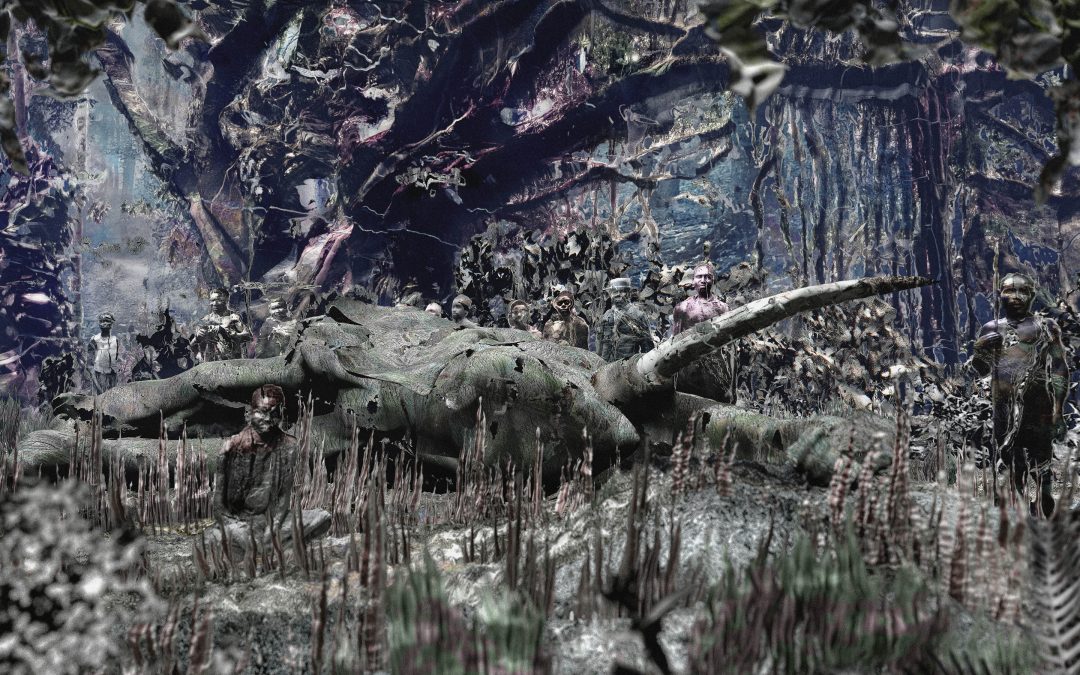
The Recollector Gallery (2011)
For the Recollector (a virtual 3D collage, created in the computer) de Beijer has assembled a large number of archive pictures. He has used a similar method as in the virtual presentation of The Recollector to make these portraits come to life in a 3D environment.
The difference is that these digital assemblages are uniquely made for print in a high resolution. Using high end 3D software to generate the images, the portraits speak of a collective past, forcibly blended into one character.

The Recollector (2011)
For the Recollector (a virtual 3D collage, created in the computer) de Beijer has assembled a large number of archive pictures. He has used a similar method as in the virtual presentation of The Recollector to make these portraits come to life in a 3D environment.
The difference is that these digital assemblages are uniquely made for print in a high resolution. Using high end 3D software to generate the images, the portraits speak of a collective past, forcibly blended into one character.